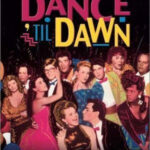Salsa dancing, a vibrant and energetic dance form, has captured hearts and dance floors worldwide. If you’re looking to spice up your life with a new hobby, salsa might be the perfect rhythm to move to. Emerging in the early 20th century, salsa dance carries a rich and dynamic history, reflecting a flavorful blend of cultures. The very word “salsa,” meaning “spice,” perfectly encapsulates the exciting fusion that defines this dance style. To truly appreciate the zest of salsa, let’s delve into its captivating history.
Origin and Early History of Salsa Dance
The roots of salsa dance are deeply embedded in the vibrant cultural landscape of Cuba and Puerto Rico, with its formal origins tracing back to the 1920s in Cuba. However, like many dynamic cultural phenomena, salsa’s evolution didn’t stop there. The 1940s saw a significant transformation as it migrated and flourished within the burgeoning Latino communities of New York City. This migration to New York acted as a crucible, forging a distinct identity for salsa as it absorbed new influences and energies.
Salsa is not a monolithic creation but rather a captivating fusion. It’s heavily influenced by a rich tapestry of Afro-Cuban music and dance traditions, drawing inspiration from styles like mambo, guaguanco, and danzon. Imagine the rhythmic complexity of Cha cha cha, the sensual sway of the Rhumba, the energetic beats of Mambo, and the lively patterns of Cumbia – all contributing to the unique flavor of salsa. As the Latino community expanded and integrated into diverse cultural landscapes, salsa dance continued to evolve, branching out into various styles shaped by their new homes. Among the most recognizable styles today are those deeply influenced by the cultural nuances of New York, Puerto Rico, and Los Angeles, each adding its own distinct spice to the salsa mix.
Key Elements of Salsa Dance: Basic Movements
When you envision salsa, images of flowing dresses, high heels clicking on the dance floor, and rapid, passionate movements often come to mind. Salsa dance is indeed characterized by its fluidity and passion, creating a dynamic dialogue between partners. Dancers might choose to follow meticulously choreographed routines or embrace a more spontaneous, freestyle approach, allowing the music to guide their steps.
Despite the variations in style, some fundamental principles underpin salsa dancing. Typically, dancers take three steps for every four-beat measure in the music. On each of these four beats, dancers might incorporate kicks, turns, or taps, adding rhythmic accents to the basic steps. A hallmark of salsa is the relatively still upper body, with the primary movement emanating from the hips. While the degree of rigidity or fluidity in the upper body can vary depending on the specific Latin influences and style, the essential hip motion remains a constant, providing the characteristic salsa groove.
Exploring Diverse Salsa Styles
Salsa’s journey is one of constant evolution, adapting and changing as it travels across cultures and generations. Dance styles are differentiated by a combination of factors, including footwork patterns, dance figures, timing variations, and the overall attitude or flavor the dancers bring to the performance.
Salsa styles originating in North America, such as the New York and Los Angeles styles, often emphasize breaking steps on the first or second beat of the music. These styles frequently incorporate linear movement patterns, with dancers moving along a slot or line. In contrast, salsa styles from Latin America, such as Casino Rueda, are characterized by circular movements and partner interaction within a group. The diversity of salsa styles is vast, but two main styles stand out prominently:
Cuban Salsa
Cuban Salsa, often referred to as “Casino,” distinguishes itself with its predominantly circular movements and a stronger “Afro-Cuban” and urban undercurrent. This style vividly showcases the influences of Rhumba, Cha cha cha, and other Afro-Cuban rhythms, lending it a distinctly earthy and grounded feel. Cuban Salsa frequently incorporates elements of folkloric movements and expressive gestures, adding layers of cultural richness to the dance.
Rueda de Casino
Originating in Cuba in the late 1950s, Rueda de Casino (“Casino Wheel”) offers a dramatically different approach to salsa. It’s a group-oriented style, bringing a communal and playful dimension to salsa. Resembling square dancing in its formation, Rueda de Casino involves pairs of dancers forming a circle. A caller announces dance moves, and all couples simultaneously execute the called steps, creating synchronized patterns and dynamic interactions within the circle.
Embrace the Rhythm
The world of dance, and salsa in particular, offers a wealth of benefits that extend beyond the dance floor. From enhancing mental and emotional well-being to improving physical health, dance enriches life in countless ways. It’s a fantastic way to improve cardiovascular health, increase flexibility and mobility, manage weight, and effectively reduce stress.
Furthermore, studies have shown a compelling link between ballroom dancing and the prevention or slowing of cognitive decline associated with conditions like Alzheimer’s and Dementia. So, whether you’re drawn to the passionate rhythms, the rich history, or the sheer joy of movement, exploring salsa dance is an invitation to look better, move better, and feel better. Why not take the first step and explore the vibrant world of salsa dancing today?

